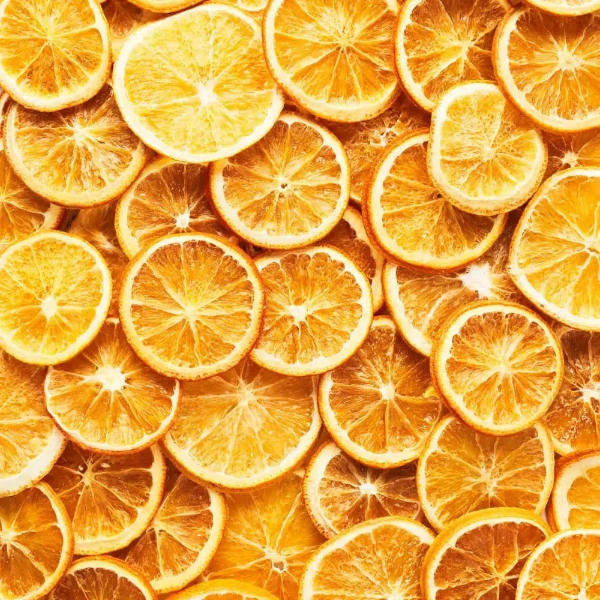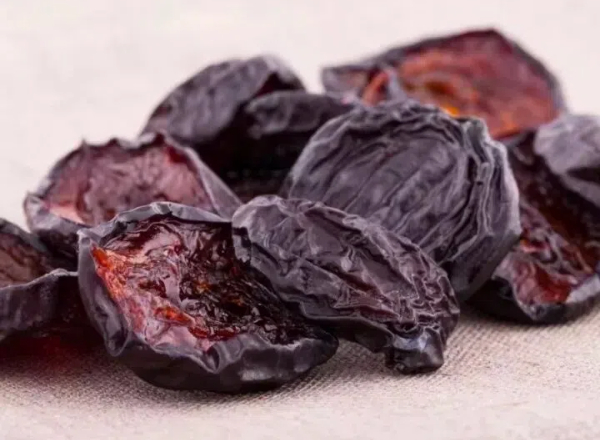
Content Menu
● Understanding Food Dehydration
>> How Does a Food Dehydrator Work?
● Benefits of Using a Food Dehydrator
● Common Uses for Food Dehydrators
● Tips for Using a Food Dehydrator
● Creative Uses Beyond Traditional Dehydration
● Nutritional Benefits of Dehydrated Foods
● How to Store Dehydrated Foods Properly
● Conclusion
● FAQ
>> 1. What types of foods can I dehydrate?
>> 2. How long does it take to dehydrate food?
>> 3. Can I use my oven instead of a dehydrator?
>> 4. How do I clean my food dehydrator?
>> 5. Are there any foods I should avoid dehydrating?
● Citations:
Food dehydrators are essential appliances for anyone interested in preserving food, creating healthy snacks, or reducing food waste. By removing moisture from food items, dehydrators extend shelf life while maintaining flavor and nutritional value. This article explores the various uses of food dehydrators, their benefits, and tips for maximizing their potential.

Understanding Food Dehydration
Food dehydration is one of the oldest methods of food preservation. It involves removing moisture from food to inhibit the growth of bacteria, yeast, and mold. The process not only preserves food but also concentrates its flavors and nutrients.
How Does a Food Dehydrator Work?
A food dehydrator operates by circulating warm air around food placed on trays. The key components include:
- Heating Element: Generates heat to warm the air.
- Fan: Circulates hot air evenly across the trays.
- Trays: Hold the food items being dehydrated.
- Air Vents: Allow moisture to escape.
Most dehydrators operate at temperatures between 85°F and 160°F, with specific settings for different types of food. For example, fruits typically dehydrate best at around 135°F, while herbs require lower temperatures around 95°F.
Benefits of Using a Food Dehydrator
Using a food dehydrator offers numerous advantages:
- Extended Shelf Life: Dehydrated foods can last for months or even years when stored properly.
- Healthier Snacks: Homemade dehydrated snacks often contain no additives or preservatives, making them a healthier alternative to store-bought options. For instance, you can create your own fruit leathers or vegetable chips without added sugars or unhealthy oils.
- Cost Savings: Buying fruits and vegetables in bulk when they are in season and dehydrating them can save money over time. This is particularly beneficial for gardeners who have an abundance of produce.
- Reduced Food Waste: Dehydrators allow you to use leftover fruits and vegetables that might otherwise spoil. By drying these foods, you can enjoy them later instead of throwing them away.
Common Uses for Food Dehydrators
Food dehydrators can be used for a wide range of applications:
- Fruits: Apples, bananas, mangoes, and berries can be dried into delicious snacks.
- Vegetables: Carrots, tomatoes, and bell peppers can be dehydrated for soups or snacks.
- Herbs: Fresh herbs like basil, thyme, and oregano can be dried to enhance flavors in cooking.
- Meats: Jerky made from beef, turkey, or chicken is a popular use for dehydrators. Properly drying meat at high temperatures ensures safety from bacteria.
- Yogurt and Fermented Foods: Some dehydrators allow you to make yogurt or ferment foods by maintaining low temperatures over extended periods.
Tips for Using a Food Dehydrator
To achieve the best results with your food dehydrator:
1. Prepare Food Properly: Slice fruits and vegetables evenly to ensure uniform drying. Blanching vegetables before dehydration can help preserve color and nutrients.
2. Avoid Overcrowding: Place food items on trays without overlapping to allow proper air circulation.
3. Monitor Temperature Settings: Adjust temperatures based on the type of food being dried to avoid cooking instead of dehydrating.
4. Store Properly: Use airtight containers or vacuum-sealed bags to keep dehydrated foods fresh longer.
5. Experiment with Flavors: Add spices or marinades to meats before dehydration for enhanced flavor profiles.

Creative Uses Beyond Traditional Dehydration
While many people think of dehydrators solely for fruits and vegetables, they have versatile applications that go beyond traditional uses:
- Dehydrating Sauces and Purees: You can dehydrate sauces like tomato paste or fruit purees into sheets that can be reconstituted later in recipes. This method is especially useful for backpackers looking to save space in their packs.
- Creating Snack Bars: Combine oats with dried fruits and nuts into a mixture that can be spread out on trays to create homemade granola bars once dried.
- Making Powdered Ingredients: Dehydrate foods like mushrooms or spinach until completely dry and then grind them into powders for use in soups, sauces, or smoothies.
- Dog Treats: You can dehydrate meats and vegetables specifically as healthy snacks for pets.
Nutritional Benefits of Dehydrated Foods
Dehydrated foods retain most of their nutritional value while offering concentrated flavors. This makes them an excellent choice for health-conscious individuals:
- High Fiber Content: Dehydrating fruits and vegetables increases their fiber concentration, which is essential for digestive health.
- Low-Calorie Snacks: Dried fruits provide a sweet alternative to candy without added sugars or preservatives.
- Nutrient Retention: Unlike some cooking methods that may destroy vitamins (like boiling), dehydration preserves many nutrients due to lower heat exposure.
How to Store Dehydrated Foods Properly
Proper storage is crucial for maintaining the quality of your dehydrated foods:
1. Use Airtight Containers: Store dried foods in glass jars with tight-fitting lids or vacuum-sealed bags to prevent moisture absorption.
2. Keep Away from Light and Heat: Store your containers in a cool, dark place to prolong shelf life.
3. Label Your Containers: Always label your storage containers with the contents and date of dehydration to keep track of freshness.
4. Check Regularly for Spoilage: Inspect stored foods periodically for any signs of moisture or spoilage; if detected, consume immediately or re-dehydrate if necessary.
Conclusion
In conclusion, food dehydrators are versatile tools that provide numerous benefits such as extending shelf life, promoting healthier snacking habits, reducing waste, and saving money. Whether you're looking to preserve seasonal produce or create unique snacks, a food dehydrator is an invaluable addition to any kitchen. From enhancing flavors to providing nutritious options for meals on-the-go, the uses of a food dehydrator are limited only by your creativity.

FAQ
1. What types of foods can I dehydrate?
You can dehydrate fruits, vegetables, meats, herbs, yogurt, and even pet food.
2. How long does it take to dehydrate food?
Dehydration times vary depending on the type of food and thickness; it typically ranges from 4 hours to over 12 hours.
3. Can I use my oven instead of a dehydrator?
While you can use an oven at low temperatures for dehydration, it is generally less efficient than a dedicated dehydrator due to uneven heat distribution.
4. How do I clean my food dehydrator?
Most trays are dishwasher safe; otherwise, wash them with warm soapy water and thoroughly dry before storing.
5. Are there any foods I should avoid dehydrating?
Foods high in fat (like avocados) do not dehydrate well as fats can go rancid over time; therefore it's best to avoid these items during the dehydration process.
Citations:
[1] https://www.webstaurantstore.com/guide/741/food-dehydrators-buying-guide.html
[2] https://www.youtube.com/watch?v=lEUA2t2XD5M
[3] https://www.callmelore.com/fool-proof-healthy-dehydrator-recipes/
[4] https://www.bestbuy.com/discover-learn/10-reasons-to-buy-a-food-dehydrator/pcmcat1634332391134
[5] https://www.freshoffthegrid.com/dehydrating-food/
[6] https://www.commercialdehydrators.com.au/dehydrating-recipes-filters
[7] https://www.webmd.com/diet/dehydrating-food-good-for-you
[8] https://homesteadingfamily.com/preservation-101-intro-to-dehydrating-food/
[9] https://www.goodhousekeeping.com/appliances/a31904157/what-is-a-dehydrator/
[10] https://learn.eartheasy.com/guides/a-beginners-guide-to-dehydrating-food/
[11] https://brodandtaylor.com/pages/dehydrating
[12] https://www.breville.com/content/breville/us/en/blog/cooking/how-to-use-a-dehydrator/_jcr_content/root/container_741553154/container/image.coreimg.85.1200.jpeg/1718622778417/how-to-use-dehydrator.jpeg?sa=X&ved=2ahUKEwikne_d3eqKAxXKke4BHcVgHf8Q_B16BAgFEAI
[13] https://www.backpackingchef.com/food-dehydrator-recipes.html
[14] https://www.healthline.com/nutrition/dehydrated-food
[15] https://www.allrecipes.com/article/how-to-use-a-food-dehydrator/
[16] https://insanelygoodrecipes.com/dehydrator-recipes/
[17] https://www.mitchellcooper.co.uk/10-alternative-uses-for-dehydrators
[18] https://www.foodandwine.com/lifestyle/12-brilliant-ways-use-dehydrator
[19] https://community.waring.com/blog/p/13or1/the-remarkable-benefits-of-adding-a-food-dehydrator-to-your-kitchen-arsenal
[20] https://www.youtube.com/watch?v=rXNIHzcE8F0
[21] https://eatsleepwild.com/homemade-dehydrated-backpacking-meals/











